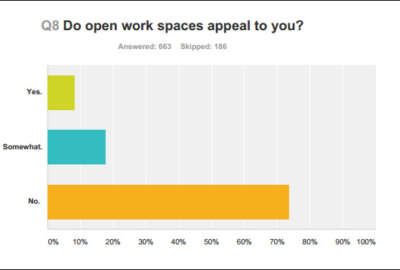
What makes the perfect office chair?
Claire Gainley of Humanscale talks with Federal News Radio's Tom Temin about how to best design chairs to fit the people who will use them.
Somewhere along the line, chairs went from something simple that maybe swiveled and tilted, to complicated contraptions with all sorts of mysterious knobs and levers.
But, said Claire Ganley, office chairs “can be designed intuitively, and be able to automatically adjust to the user.” Ganley, a consultant in ergonomics at Humanscale, said that trend in chair design and manufacturing is ideal for the open office, where people routinely use more than one chair.
If ergonomics is the science of fitting a task to the body, in some sense, the chair is at the center because that’s what supports the human and is the most easily adjustable component in the workflow.
Ganley points out that at 29.5 inches, the average desk height is ideal for 6’4” males, hardly the average. Chairs should be able to adjust to accommodate people from 5′ or less to 6’6” or so, such that when they sit, they end up with feet on the floor, their backs upright, and their keyboards even with the height of relaxed elbows.
She said padding should support a person’s weight but be neither too thick nor too thin.
In her consulting work, which includes federal agencies, Ganley said the idea of an impressive chair as a status symbol is disappearing in favor of chairs designed for more universal use within the office.
Before buying, Ganley said, “testing the different options is essential, making sure they support the range of the population. And ensuring employees can use them comfortably on the first day; the chair is promoting their comfort and circulation.”
Copyright © 2024 Federal News Network. All rights reserved. This website is not intended for users located within the European Economic Area.
Tom Temin is host of the Federal Drive and has been providing insight on federal technology and management issues for more than 30 years.
Follow @tteminWFED
More from the Special Report:





